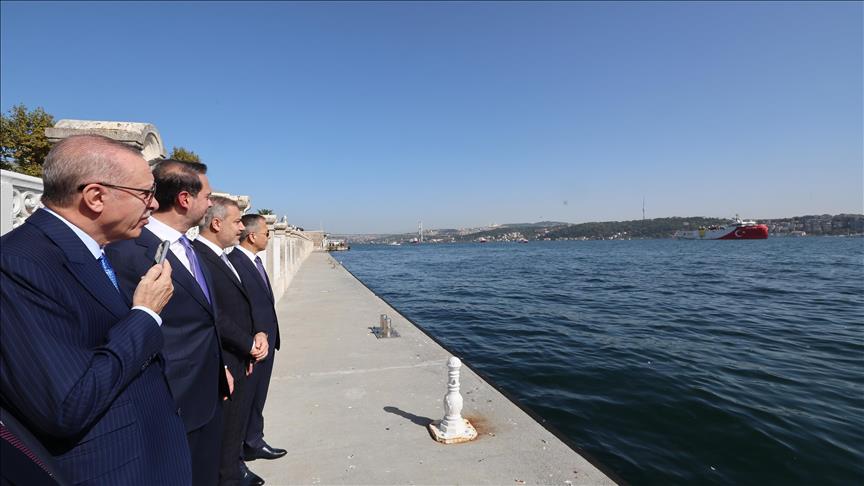Turkish President Recep Tayyip Erdogan on Saturday attended a ceremony seeing off a Turkish vessel embarking on its latest energy research mission, bound for the waters off Somalia.
The Oruc Reis will do seismic surveys in Somali waters under an agreement signed in March between Türkiye’s Energy and Natural Resources Ministry and Somalia’s Petroleum and Mineral Resources Ministry.
The ship began its journey through the Istanbul Straits at around 11 a.m. (0800GMT) after entering from the Black Sea, making its way past the Presidential Dolmabahce Office, where the ceremony took place at 2.30 p.m. (1130GMT).
Erdogan greeted the ship’s crew. Energy Minister Alparslan Bayraktar also attended the ceremony.
The vessel is scheduled to arrive off the coast of Somalia later this month to do seismic surveys for oil and natural gas in three areas where Türkiye has secured exploration licenses, said a ministry statement.
The vessel will sail through the Mediterranean to the Suez Canal and go through the Red Sea.
The ship will be accompanied by two Turkish naval frigates, as well as the Zaganos Pasa Support Ship, Sancar Platform Support Ship, and Ataman Tracking Ship.
It will carry out 3-D seismic studies in areas off the coast of Somalia.
The mission, expected to last some seven months, will involve collecting seismic data for both oil and natural gas, the ministry added. This data will be analyzed in Ankara to identify potential drilling sites.
“The Oruc Reis will do 3D seismic studies in the designated maritime jurisdiction area, which has never been done before. We anticipate the area where the ship will work is a region with oil indicators,’ Bayraktar said.
– Ship has collected data across 23,000 square kilometers
Launched in 2017, the Oruc Reis was entirely designed and constructed in Türkiye, showcasing the expertise and collaboration of Turkish engineers, technicians, and workers through every stage of development, from design to production.
Specifically engineered for geophysical, geological, oceanographic, and hydrographic research, the ship is 87 meters (285 feet) long, 23 m (75 ft) wide, and 34 m (111 ft) high.
Powered by four 2,520 kilowatt diesel-electric engines, the ship is capable of conducting both 2-D and 3-D seismic surveys for offshore oil and gas exploration. To date, the vessel has carried out numerous seismic missions, collecting data across a total area of 23,000 square kilometers (8,880 square miles).
Early this year Türkiye and Somalia signed memorandums of understanding under which Turkish Petroleum, Türkiye’s national oil company, obtained licenses for three offshore areas in Somali waters. The ministry plans to do seismic surveys across the three licensed zones, each covering roughly 5,000 square km (1,930 sq mi).

